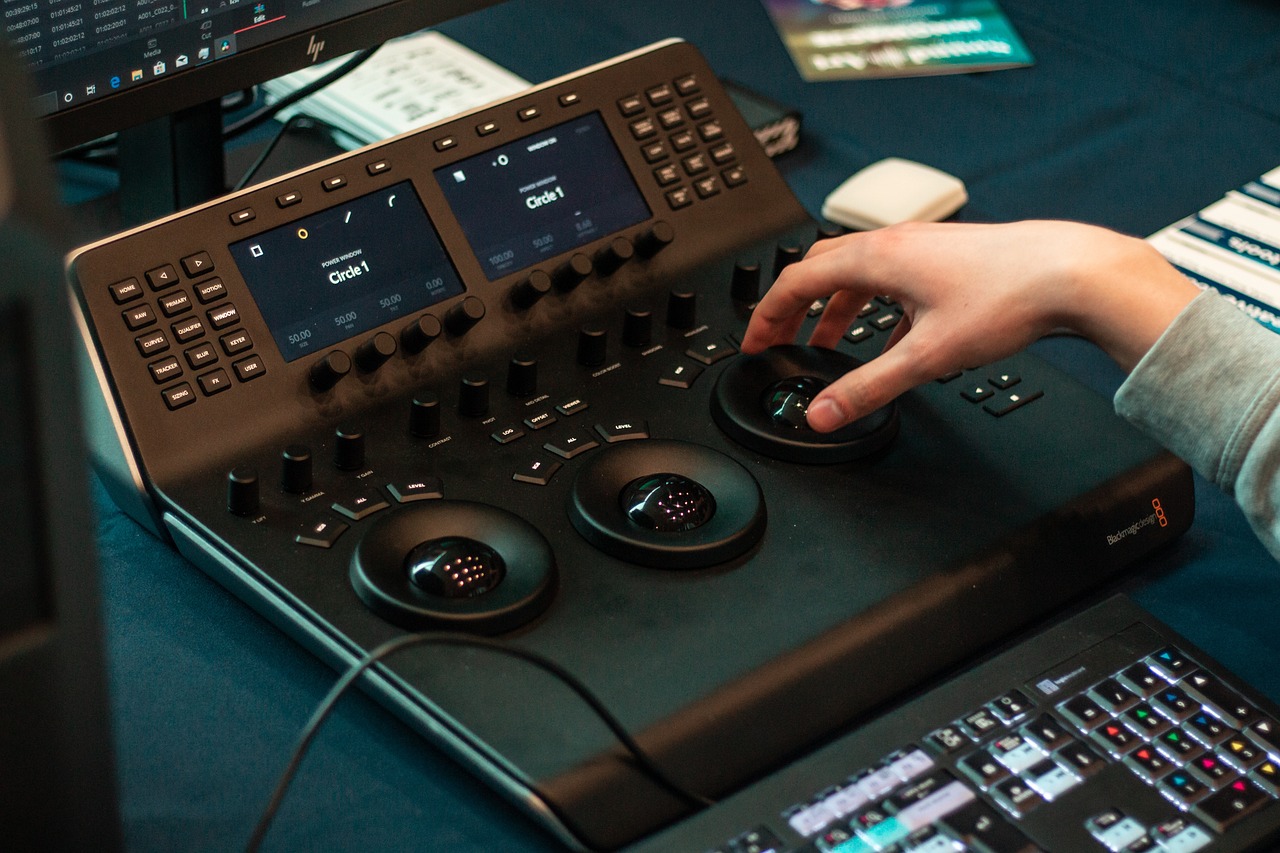Corporate Video Production Company in Durban: How We Stand Out As a top-notch corporate…
Video Production: Creating Engaging Visual Stories
Video production has become an integral part of modern communication strategies, captivating audiences across various platforms. With the rise of digital media and social networking sites, videos have become a powerful medium for businesses and individuals to convey their messages effectively. In this article, we will explore the world of video production, its importance, different types, production process, key elements, equipment, best practices, latest trends, and the benefits of professional video production services.
Importance of Video Production

In today’s fast-paced digital age, capturing the attention of your target audience is crucial. Videos have proven to be one of the most engaging forms of content, allowing you to connect with your audience on an emotional level. According to recent statistics, video content is shared more frequently and has a higher chance of going viral compared to other types of content. Whether you’re promoting a product, educating your audience, or documenting an event, video production enables you to create a lasting impact.
Different Types of Video Production
Video production encompasses a wide range of genres and formats. Let’s explore some of the common types of video production:
Corporate Videos
Corporate videos are created to represent a company or organization. These videos often highlight the company’s values, culture, products, services, and achievements. Corporate videos are an effective way to build brand awareness, establish credibility, and connect with potential customers.
Marketing and Promotional Videos
Marketing and promotional videos aim to promote products, services, or events. These videos are designed to capture the audience’s attention, create interest, and drive action. By showcasing the unique selling points of a product or service, marketing videos can significantly influence consumer behavior and increase sales.
Training and Educational Videos
Training and educational videos are used to provide information and teach specific skills or concepts. These videos are commonly used in employee training, e-learning platforms, and educational institutions. By using visuals and demonstrations, training videos make complex topics easier to understand and retain.
Event Videos
Event videos capture the highlights of conferences, seminars, trade shows, and other live events. These videos are valuable for documenting the event, showcasing speakers, and engaging attendees who couldn’t attend in person. Event videos can be shared on social media or used for future promotional purposes.
Documentary Videos
Documentary videos tell a compelling story about real-life events, people, or issues. They are often used to raise awareness, educate the audience, or spark conversations. Documentaries require in-depth research, interviews, and creative storytelling techniques to captivate viewers and convey a powerful message.
Explainer Videos
Explainer videos are concise and engaging videos that simplify complex ideas or concepts. They are commonly used to introduce a product or service, explain its features and benefits, and guide viewers through a step-by-step process. Explainer videos are known for their ability to hold the viewer’s attention and increase understanding.
Steps in Video Production Process
Successful video production involves several key steps that ensure a smooth and well-executed final product. Let’s take a closer look at the three main phases of video production:
Pre-production
Pre-production is the planning and preparation phase of video production. It involves defining the objectives, audience, and key messages of the video, as well as creating a detailed script and storyboard. During this phase, the production team also secures necessary permits, identifies suitable locations, schedules shoots, and organizes the logistics.
Production
Production is the phase where the actual filming takes place. It includes setting up the equipment, capturing the footage, and conducting interviews or performances. The production team ensures that lighting, sound, and camera angles are optimized for each scene. Effective communication and coordination among the team members are vital to ensure a successful shoot.
Post-production

Post-production is the editing and enhancement phase. It involves assembling the captured footage, adding music and sound effects, incorporating visual effects or animations, and fine-tuning the overall presentation. Post-production also includes color grading, audio mixing, and adding graphics or subtitles. This phase requires skilled video editors and access to professional editing software.
Key Elements of a Successful Video Production
To create a compelling video, several key elements must be considered. These elements work together to engage the audience and deliver a memorable viewing experience. Let’s explore the essential elements of successful video production:
Scriptwriting
A well-crafted script forms the foundation of any video production. It outlines the narrative structure, dialogue, and key messages that need to be conveyed. The script should be concise, engaging, and tailored to the target audience. A compelling script captivates viewers and guides them through the video’s story.
Storyboarding

Storyboarding involves creating a visual representation of the script through a series of illustrations or sketches. It helps visualize the shots, camera angles, and transitions before filming begins. Storyboarding allows the production team to plan the composition and flow of the video, ensuring a cohesive and visually appealing final product.
Location and Set Design
The choice of location and set design can greatly impact the mood and aesthetic of the video. Whether it’s a real-life location or a constructed set, careful consideration should be given to props, lighting, and overall ambiance. The location and set design should complement the narrative and enhance the viewer’s engagement.
Lighting and Sound
Lighting and sound play crucial roles in setting the tone and atmosphere of a video. Proper lighting techniques can create depth, highlight important elements, and evoke emotions. High-quality sound recording and mixing ensure clear dialogue, music, and sound effects, providing a seamless audiovisual experience.
Cinematography and Camera Techniques
Cinematography involves the art of capturing visually appealing shots. It includes camera movements, framing, composition, and shot sizes. The choice of camera techniques, such as close-ups, wide shots, or tracking shots, can enhance the storytelling and create a dynamic visual experience.
Editing and Visual Effects

Editing is where the raw footage is transformed into a polished and cohesive video. Skillful editing techniques, such as pacing, transitions, and color grading, bring the story to life. Visual effects and animations can be added to enhance the visual impact and create unique experiences.
Video Production Equipment and Tools
To create professional-quality videos, various equipment and tools are essential. Let’s explore some of the key equipment used in video production:
Cameras and Lenses

High-quality cameras and lenses are crucial for capturing clear and detailed footage. DSLR cameras, mirrorless cameras, or professional cinema cameras offer different capabilities and options. The choice of lenses depends on the desired focal length, depth of field, and the overall visual aesthetic.
Lighting Equipment
Proper lighting is essential for achieving a visually appealing and well-lit video. Lighting equipment, such as continuous lights, strobes, reflectors, and diffusers, helps control the intensity, direction, and quality of light. Lighting setups vary depending on the shooting location and the desired mood of the video.
Audio Equipment
Clear and high-quality audio is vital for delivering a professional video. This includes using lavalier microphones, shotgun microphones, boom poles, and audio recorders to capture clean audio during filming. Audio editing software is used in post-production to remove background noise, enhance dialogue, and add sound effects.
Editing Software

Editing software is used to assemble, edit, and enhance the footage captured during production. Professional video editing software, such as Adobe Premiere Pro, Final Cut Pro, or DaVinci Resolve, provides advanced features for seamless editing, color grading, and adding visual effects or animations.
Motion Graphics and Animation Tools
Motion graphics and animations add visual interest and enhance the storytelling aspect of a video. Software tools like Adobe After Effects or Blender allow the creation of dynamic text, graphics, and visual effects. These tools bring the video to life and create a memorable viewing experience.
Best Practices for Video Production
To ensure the success of a video production project, it’s important to follow some best practices. Here are a few key recommendations:
Plan and Prepare
Thorough planning and preparation are crucial for a smooth video production process. Define the objectives, target audience, and key messages of the video. Create a detailed script, storyboard, and shot list. Organize logistics, secure permits, and ensure all necessary equipment and resources are available.
Focus on the Message
Keep the central message of the video clear and concise. Understand the target audience and tailor the content to their preferences and needs. Use storytelling techniques to engage viewers emotionally and make the message memorable.
Engage the Audience
Create videos that capture the audience’s attention from the start. Use visually appealing shots, dynamic editing, and compelling storytelling techniques. Incorporate elements that evoke emotions and create a connection with the viewers.
Use High-Quality Equipment

Invest in high-quality cameras, lenses, lighting equipment, and audio gear. Good equipment ensures clear visuals, crisp audio, and professional production value. High-quality footage is essential for post-production editing and enhancing the final video.
Optimize for Different Platforms
Consider the platform where the video will be shared and optimize it accordingly. Each platform may have specific requirements or formats. Ensure the video is compatible with various devices, resolutions, and aspect ratios.
Trends and Innovations in Video Production
Video production is continuously evolving, driven by technological advancements and changing audience preferences. Here are some current trends and innovations in the field:
Virtual Reality (VR) and Augmented Reality (AR)
VR and AR technologies offer immersive experiences that blur the line between the real and virtual worlds. These technologies enable viewers to interact with the video content, enhancing engagement and providing unique storytelling opportunities.
360-Degree Videos
360-degree videos provide an immersive experience by capturing the entire surrounding environment. Viewers can navigate the video by moving their devices or using VR headsets. This technology is widely used in virtual tours, live events, and interactive storytelling.
Live Streaming
Live streaming allows real-time video broadcasting over the internet. It has gained popularity for live events, webinars, and social media platforms. Live streaming offers a sense of immediacy and interactivity, allowing viewers to engage with the content in real-time.
Interactive Videos
Interactive videos enable viewers to interact with the content by making choices or engaging in activities within the video. These videos provide a personalized and engaging experience, allowing viewers to control the narrative and explore different outcomes.
Mobile Video Production
With the increasing use of smartphones, mobile video production has become more accessible and popular. Mobile devices offer high-quality cameras, editing apps, and convenient portability. Mobile video production allows for quick content creation and immediate sharing on social media platforms.
Benefits of Professional Video Production Services

While it’s possible to create videos independently, professional video production services offer several advantages. Let’s explore the benefits of working with experienced video production professionals:
High-Quality Production Value
Professional video production ensures a high standard of production value. Skilled professionals use their expertise in cinematography, lighting, sound, and editing to create visually stunning and engaging videos. The result is a polished and professional final product.
Creative Expertise
Video production professionals bring creativity and artistic vision to the project. They can help refine ideas, create compelling narratives, and implement innovative techniques to make the video stand out. Their expertise ensures that the video effectively communicates the desired message and resonates with the target audience.
Time and Cost Efficiency
Outsourcing video production saves time and resources. Professionals are experienced in managing the entire production process efficiently. They handle the planning, equipment setup, filming, editing, and post-production tasks, allowing you to focus on other aspects of your business or project.
Professionalism and Brand Image
High-quality videos contribute to a professional brand image. Professionally produced videos instill confidence in your audience, establish credibility, and differentiate you from competitors. A well-executed video reflects positively on your brand and enhances its reputation.
Increased Engagement and Conversion
Engaging and visually appealing videos attract and retain viewers’ attention. They encourage social sharing, increase website traffic, and improve conversion rates. Professional video production ensures that the video is optimized for maximum viewer engagement, ultimately driving desired actions.
Conclusion
Video production is a powerful tool for storytelling, engagement, and communication. Whether you’re creating corporate videos, marketing campaigns, or educational content, understanding the key elements and best practices of video production is essential. By leveraging the right equipment, following the production process, and embracing the latest trends, you can create impactful videos that captivate your audience and achieve your goals.
FAQ
Q1: How long does video production take? A: The time required for video production depends on various factors, such as the complexity of the project, the length of the video, and the availability of resources. It can range from a few days for a short video to several weeks or months for a larger production.
Q2: Can I shoot a video with my smartphone? A: Yes, smartphones can be used to shoot videos, especially with the advancements in camera technology. However, professional video production may require additional equipment and expertise to achieve higher production value.
Q3: What is the role of a video producer? A: A video producer oversees the entire video production process. They coordinate with the creative team, manage logistics, handle budgets, ensure smooth operations, and ensure that the final video aligns with the client’s objectives.
Q4: How can I make my videos more engaging? A: To make your videos more engaging, focus on storytelling, use visuals effectively, keep the content concise, and incorporate elements that evoke emotions. Interactive elements, such as quizzes or clickable links, can also enhance engagement.
Q5: How can I measure the success of my video production efforts? A: The success of video production can be measured through various metrics, such as the number of views, engagement rate, click-through rates, and conversions. Monitoring these metrics and analyzing audience feedback can provide insights into the effectiveness of your videos.




